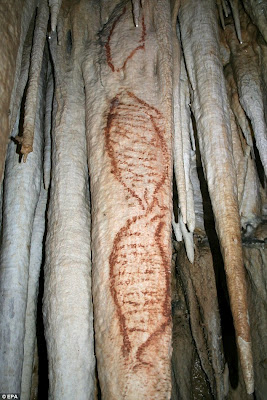The title of one of my previous blogs was “Chauvet Cave, the oldest known cave art in Europe“. This title has to be changed. A fortnight ago (feb. 11, 2012) professor Jose Luis Sanchidrian (University of Corboba) announced that six cave paintings had been found in the Nerja Caves 35 km from Malaga (Andalusia, Spain). Datings done on organic deposits beside the paintings gave an age between 43,500 and 42,300 years. In 2013 results of datings of the paintings themselves should be published.
It is remarkable that these paintings represent animals just as the paintings of the much younger caves in France and Spain which were undoubtedly made by Homo sapiens. Was totemism a part of neanderthal culture?
Art in Olduvai 1,74 Million Years BP, Baboonhead Rather unknown, undeserved, the oldest known art in the world
The Origin of Aesthetic Feeling and Art Fundamental: How our aesthetic feeling originated in reproduction of man, a darwinian explanation.
The oldest statuettes adapted by man are between 233,000 and 800,000 years old
“Lion Man”, the oldest statuette with a combination man-animal ‘Der Löwenmensch” was found in Germany.
The oldest Love Statuette in the World They keep on loving for ever in the British Luseeum.
A virtual visit to the Lascaux Cave is mind blowing!
Nerja Caves: the oldest Cave Art in Europe, 42,000 years old Rock paintings , probably made by neanderthals

